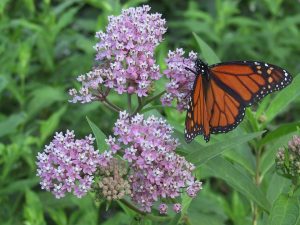Scenic Autumn Drives, Train Rides, Chairlift Rides, Hikes and Events
By Nina Anthony | September 23, 2015

It’s time to say goodbye to a gloriously moist summer that reaped a bountiful harvest of peaches, apples, plums, cherries, apricots, vegetables and flora galore in verdant lands across Taos and beyond. But autumn brings a different kind of bounty to northern New Mexico – a feast for the eyes in the form of rich, vibrant fall color.
Fortunately, the best weather for producing brilliant autumn foliage is a growing season with ample moisture followed by a dry, cool, sunny autumn with warm days and cool but frostless nights. Warm temps and plenty of sunshine are forecasted for this weekend – just in time for the 2015 Fall Arts Festival. Be sure to check out the many art openings and the spectacular outdoor art installations on exhibit for The Paseo before you head out for the high country to view Mother Nature’s colorful autumn palette.
According to the Farmer’s Almanac, the ideal time for viewing fall color in northern New Mexico will be between September 28 and October 9, 2015. While you’ll find some red, purple and bronze pigments from maples, oaks and beech trees, the predominant autumn color in northern New Mexico is yellow from the plentiful aspen trees that dot the Sangre de Cristo mountainsides in deep gold.
Located at the base of the Sangre de Cristo range of the Southern Rockies, Taos makes an ideal starting point for autumn leaf peeping. Auto tours, hiking treks, chairlift rides and train rides – all within easy driving distance – provide lots of colorful options.
Carl Colonius, an avid Taos outdoor recreationist, reminds us that mountain biking is another great way to soak up the fall color. “Favorite trails to ride in the Fall all have to do with getting up into the aspens. It’s about riding in a tunnel of gold, with bright sun filtering through golden aspen leaves, listening to the hiss of fast wheels rolling over trail covered in leaves just fallen. Some of my favorites include the iconic South Boundary, and all its variations, the newly opened Lost Lake Loop, and the Talpa Traverse.”
Cindy Brown, author of Taos Hiking Guide and hiking columnist for the Taos News suggests, “For fall hiking, I recommend going up on some of the high elevation trails near the Taos Ski Valley now and, as fall progresses, I suggest people try some of the lower elevation hikes near Penasco like Santa Barbara.”
Here are some other favorite spots for finding gold in them there hills by trail, rail or chairlift.
1. Driving Tour: The Enchanted Circle Scenic Byway
The Enchanted Circle is an 85-mile circular route that loops through Taos, Questa, Red River, Eagle Nest, Angel Fire and back to Taos. It traverses through mountains, canyons, sprawling ranches, a gold-mining ghost town (Elizabethtown was the first incorporated town in New Mexico) and the breath-taking Moreno Valley. You may start your trip in Taos at the Taos Visitor Center and head east on Highway 64 toward Angel Fire, or, head north out of town on Highway 68 and then on to Highway 522. At the town of Questa, take a right (east) on Highway 38 that will take you to the high-altitude recreation town of Red River and over Bobcat Pass to Eagle Nest, Angle Fire, and back around to Highway 64 that will bring you back to Taos. The whole trip will take you about 2 hours if you drive straight through, but you’ll most certainly extend the trip by making some stops along the way.
If you drive the Enchanted Circle this weekend, you’ll be just in time for a stop in Red River for the Aspencade Arts & Crafts Fair — Steampunk Style.. Another favorite fall event in northern New Mexico is the annual Oktoberfest in Red River, scheduled for the weekend of October 9-11. There you can enjoy authentic German food and music, shop for arts and crafts, and taste craft beers & New Mexico wines while enjoying the crisp autumn air and changing colors.

2. Driving Tour: Highway 64 to Tierra Amarillo
One of the prettiest drives any time of year is between Tres Piedras and Tierra Amarilla, but this 80-mile drive is particularly beautiful in the autumn. From Taos, head north on Highway 68 to the junction of Highway 150 that heads east to Taos Ski Valley and Highway 64 that heads west toward the Rio Grande Gorge Bridge. Take a left on Highway 64 and continue past the 285 crossroad at Tres Piedras (translation: Three Rocks). From there, the road begins to climb into high altitude country that meanders through the backbone of north central NM. Be sure to stop at one of the scenic outlooks on the right for a spectacular view of the Brazos Cliffs and surrounding countryside that will be dotted with golden aspens if you time your trip right.
Another must-see stop along this route is Tierra Wools, a 100-year weaving studio and showroom in the historic town of Los Ojos, just 7 miles north of Tierra Amarilla on Highway 64/84. Here, weavers carry on the age-old tradition of spinning hand-dyed yarns from the wool of Churro sheep. The showroom/gallery offers everything from rugs, blankets and pillows to felted wool hats, shawls, scarves and large selection of yarns and weaving supplies. They’re open through Monday – Saturday 9:00 am – 6:00 pm and Sunday 11:00 am – 4:00 pm through November 30.
3. Driving Tour: The High Road between Taos and Santa Fe
The High Road is a 56-mile day trip that takes you from Taos to Santa Fe, or vice versa. This scenic winding road takes you through the Carson National Forest with lots of scenic lookout points along the way to take in dramatic vistas. You will wind through the Spanish village of Chimayo that’s famous for its El Sanctuario de Chimayo, a small, historic adobe chapel known for its holy dirt with healing properties.
You’ll also wind your way through other charming rural towns like Picurís (a Pueblo village), Ojo Sarco (a pastoral agricultural and art community), Córdova (known for its woodcarving), Truchas (the summit town), Las Trampas (famous for its church, too), and Peñasco (Sugar Nyphs restaurant is a must for lunch).
Take the High Road this weekend and you’ll catch the second weekend of the annual High Road Art Tour. It’s easy to see how this scenic rural area with verdant meadows, towering mountains and historic villages has inspired so many artists to live in the area.
4. Cumbres & Toltec Scenic Railroad
From Tierra Amarilla and Los Ojos, it’s an easy scenic drive up to Chama, New Mexico, where you can catch a ride on the vintage steam locomotive-driven excursion on the Cumbres & Toltec Scenic Railroad. You’ll travel via a narrow gauge railroad line built in the late 1800’s through meadows and mountains that will take you beyond 10,000 feet at Cumbres Pass — the highest pass reached by rail in the country — and head back down through the deep Toltec Gorge. Along the way, you’ll pass through aspen, cottonwood and scrub oak groves that should be bursting with color. The open-air car at the rear of train affords 360-degree views of the stunning countryside and is ideal for capturing photographs. Be sure to bring a jacket – it gets chilly in the high elevations. The train runs daily from Chama through October 18th. (Weather permitting.) Try to plan your trip so you can stay overnight in Chama, a scenic outdoorsy community nestled among towering cottonwood trees where the Archuleta and Willow creeks meet.
5. Scenic Autumn Chairlift Ride at Angel Fire Resort
Ride the Chile Express chairlift more than two miles up for gorgeous panoramic views from 10,677 feet. Once you’re at the top, soak up the fall colors on foot and hike your way back down. Open weekends only from September 25 – October 18, 2015: 8am-4pm. Price: $12 for adults; $10 for seniors; $8 for children 1-4; children 4 and under are free.
6. Hiking: Columbine Trail
There are hundreds of great hiking trails in the Taos and Enchanted Circle area that offer spectacular fall scenery. Columbine Trail is one that is popular with locals and visitors alike. It’s located on the south side of Highway 38 – about 7 miles west of Red River and 5 miles east of Questa. Drive through Columbine Campground until you reach a small parking area at the back where you can pick up the trailhead. It can be an easy to moderate hike depending on how far you choose to go. A good place to stop if you’re looking for an easier hike is just before the Twining Trail junction. There you’ll find an aspen grove that’s an excellent spot to stop for a picnic. Beyond this area, the trail becomes steeper and more advanced — you can head all the way to Lobo Peak, Gold Hill and Taos Ski Valley, if you choose.
7. Hiking and Biking: Goose Creek Trail (Trail #65 to Goose Lake)
 Like Columbine Trail, Goose Creek Trail can be an easy hike if you don’t go all the way to Goose Lake. If you choose to go all the way to the lake, be prepared for a fairly difficult 6-mile hike (one way) that climbs to an elevation of 12,700 feet. To access the trailhead, drive to the the east end of Red River and then veer to the right on State Road 578 towards the Upper Valley and travel about 2 ½ miles. Look for the trailhead sign on your right and a pull-off area on the road where you may park. Cross the bridge and begin your hike to the left along the river. You’ll soon enter into some great leaf-peeping territory with lots of aspen trees. This is a beautiful hike no matter how far you go.
Like Columbine Trail, Goose Creek Trail can be an easy hike if you don’t go all the way to Goose Lake. If you choose to go all the way to the lake, be prepared for a fairly difficult 6-mile hike (one way) that climbs to an elevation of 12,700 feet. To access the trailhead, drive to the the east end of Red River and then veer to the right on State Road 578 towards the Upper Valley and travel about 2 ½ miles. Look for the trailhead sign on your right and a pull-off area on the road where you may park. Cross the bridge and begin your hike to the left along the river. You’ll soon enter into some great leaf-peeping territory with lots of aspen trees. This is a beautiful hike no matter how far you go.
8. Hiking: Williams Lake Trail #62 and Wheeler Peak Trail #67
The trail to Williams Lake is probably one of the most popular trails for Taos locals of all ages due to its relative ease and stunning scenery. You can access the trailhead past the chairlifts near the Phoenix Grill in Taos Ski Valley. A little under 2 miles in length, the trail reaches its summit at 11,142 feet – about ¼ mile from the lake. It will take you anywhere from 45 minutes to an hour to reach the lake depending on your pace.
If you prefer a more challenging hike, look for a sign for the Wheeler Peak trail on the east side of the trail before you reach Williams Lake. Wheeler Peak is the highest point in New Mexico at an elevation of 13,161 feet. While the trail to the summit is just under 1.5 miles and is considered easy by mountaineering standards, there are some steep switchbacks along the way that can get slippery (and icy depending on the weather). The final ascent to the top requires some muscle strength and there’s a boulder field near the top that requires cautious footing. Trekking poles are very helpful – especially on the way down. Call the Ski Valley ahead for weather conditions. There has already been snowfall in the higher elevations. Dress warm in plenty of layers for this trek. You’ll definitely need a hat and gloves at this time of year.
9. Hiking, Biking, Driving Tour: Garcia Park
Garcia Park, located in the Carson National Forest about 20 miles southeast of Taos through Taos Canyon on Highway 64 (the turnoff is Forest Road 437) is a popular spot for tourists and locals alike in the autumn. A high sunny meadow rimmed with golden aspens, Garcia Park offers breath-taking views into the Wheeler Peak Wilderness Area. The area is open to vehicles and receives a good amount of traffic in the autumn from sight-seers, campers, hunters and people cutting firewood in the deep forests. Hikers and bikers might want to wear a bright hat or clothing to alert motorists and hunters of your presence. And remember, at this elevation, days cool quickly and temps can plummet at the drop of a hat with an afternoon storm, so, carry a weatherproof shell and bring an extra layer of clothing for warmth just in case.
10. Hiking, Biking, Driving Tour: Valle Vidal
The Valle Vidal (aptly translated to The Valley of Life) Unit of the Carson National Forest is a 102,000-acre mountain basin paradise that is often referred to as the Yellowstone of the Southwest for its abundance of wildlife including mule deer, black bear, mountain lion, and bald eagles. Home to the largest herd of elk in New Mexico, the area is also rich in varied plant life growing in elevations ranging from 7.700 to 12,584 feet. Fishing for Rio Grande Cutthroats and cut-bows within the Valle Vidal along the Rio Costillo and Comanche Creek requires specific lures and baits and is catch-and-release only, with the exception of Shuree Ponds which allows up to 2 trout take-home. For directions: visit the Forest Service website.
A note about bear safety: It’s important to be “bear aware” when you’re hiking in the New Mexico wilderness – especially in remote areas. Fall is the time of year that bears are trying to fatten up for the winter, so, it’s possible to encounter them on the trail. With the plentiful rainfall this summer, acorns, piñon nuts and other food supplies are abundant and often grow near trails and streams in areas where people hunt, hike, and recreate. There have been seven black bear attacks on humans in the state this year, the highest number in the past 16 years. So, be extra cautious. If you see a bear in the distance, make some noise to warn the bear of your presence so you don’t surprise them. Bears are anxious to avoid humans and will usually move away and continue their search for food elsewhere if encountered.
Do you have any favorite spots for leaf-peeping in northern New Mexico? Please share this post on your social media channels and add your your top spots for enjoying autumn color in Taos and beyond.



